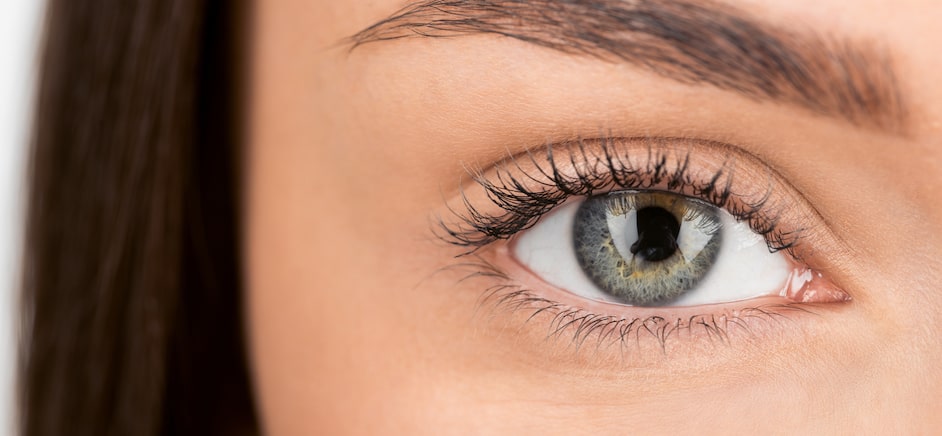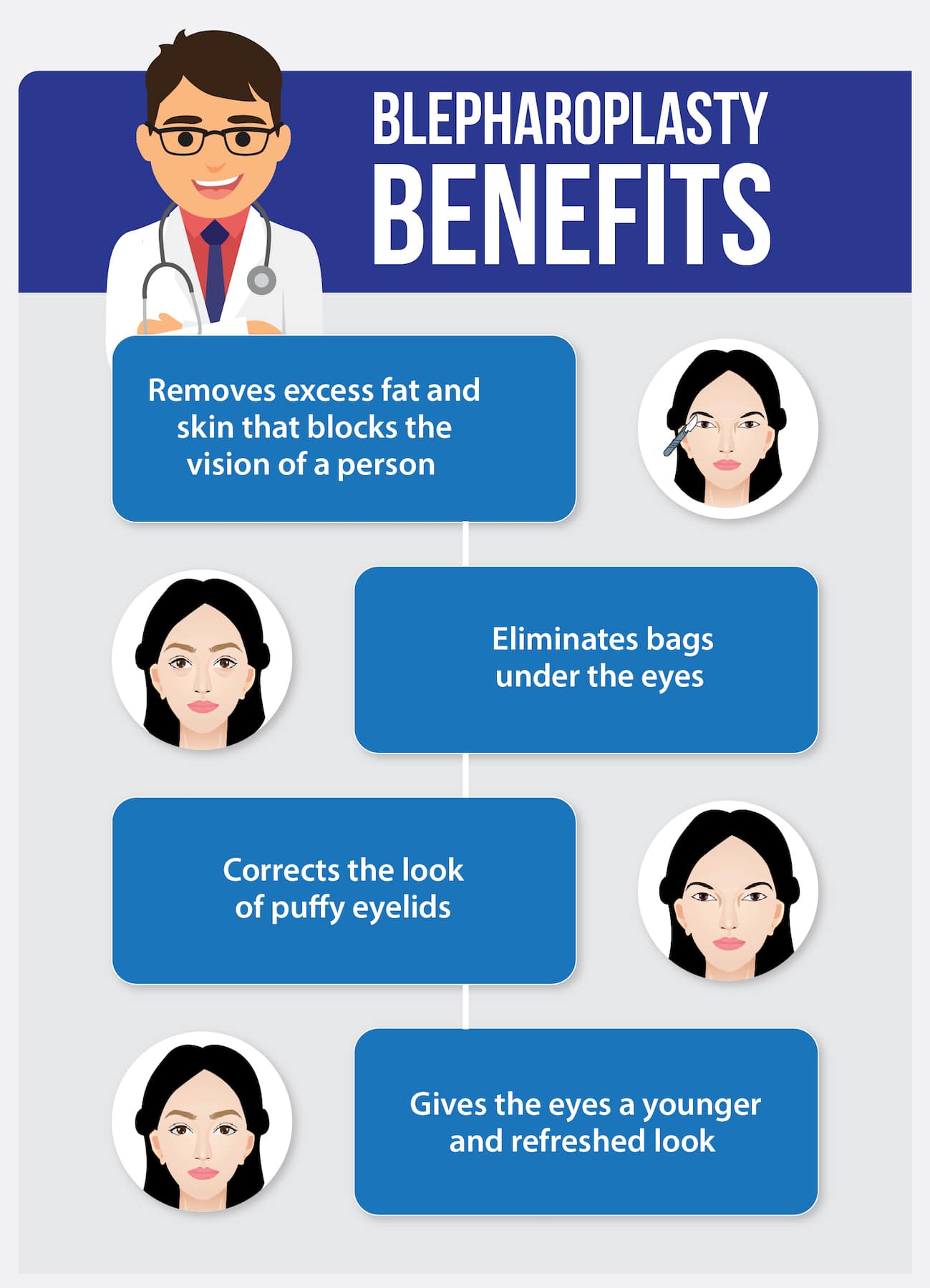
Blepharoplasty is able to improve the vision of a person and provide an improved aesthetic appearance to the eyelids. Blepharoplasty, AKA eyelid surgery, removes excess fat and skin in the eyelids that can block the vision of the patient as well as remove bags under the eyes and correct the appearance of puffy upper eyelids. The surgery can be performed as upper blepharoplasty or lower blepharoplasty and the decision depends on the condition of the eyelids and the results desired by the patient.
In general, blepharoplasty is an invasive surgical procedure that addresses issues with the lower or upper eyelids. The procedure can fix the appearance of drooping skin that blocks the normal vision of the patient, fatty deposits under the eyelids, extra eyelid skin, and dark circles under the eyes.
There are two common reasons a person wants to get blepharoplasty and one reason is functional in nature while the other is an aesthetic reason. Before we go into detail about these reasons, let’s take a look at some of the common benefits of having blepharoplasty:

The functional choice is to improve the vision of a patient if excess and sagging skin around the eyes is having a negative impact on normal vision capabilities. For example, the skin can hang in the corner of the eye and block normal vision from the side of the eye. Blepharoplasty removes the excess skin to give the person an improved amount of vision.
The cosmetic, or aesthetic, reason for blepharoplasty is to change the look of the eyelids as well as the skin around the eyes. As the skin continues to age, it can lose the ability to produce collagen in the upper eyes and the eyelids. In turn, fibers that connect the muscles that control the eyes are able to detach due to the aging process and cause the eyelid to droop. Plus, fat can move into the eyelid tissue which can cause a droopy or puffy look. Blepharoplasty removes excess fat and skin while also securing muscles that have loosened for a more youthful look.
During lower blepharoplasty, the area below the eye is treated and it starts with the surgeon creating an incision below the lower eyelash line in order to tighten the skin below the eye. The incision can be made along the lower lash line, or it can be created inside the eyelid along the mucosa. If necessary, the surgeon can either remove or reposition the fat that is beneath the eye into the desired position. In addition, the surgeon might need to perform a canthoplasty or canthopexy to address a drooping eyelid. Canthoplasty is focused on the corners of the eyes, where the eyelids meet, to improve the outer corner of the eye, address the underlying structure of the face, and prevent any further drooping. It is an invasive choice as the surgeon will have to cut the muscle in the targeted area. Canthopexy is less invasive and normally involves the use of sutures to stabilize and tighten the muscles and tendons of the eyes.
During upper blepharoplasty, the surgeon alters the muscle and the skin above the eye by making an incision where the new crease of the eyelid will be located. The surgeon can remove excess fat and skin from above the eyelid before closing the incision created earlier during the procedure.
The recovery period will include some pain and discomfort, but these issues can be treated with pain medication prescribed by the surgeon. The placement of ice packs on the eyes can also help to reduce some of the swelling and bruising that can happen after the surgery. Besides the bruising and swelling, the patient can also expect to experience some blurry vision for seven to fourteen days,
Some of the common risks involved with having blepharoplasty include dry eyes, scarring, an increase in pressure due to bleeding behind the eye, ectropion (the eyelid turns outward), double vision, lower eyelid retraction (where the white of the eyes starts to show), and an injury to the muscles of the eyes. Patients should discuss the possible risks involved with having upper blepharoplasty and/or lower blepharoplasty before making the final decision to have the procedure,
It can take several months for the treated area to completely heal so the results can be viewed by the patient. In general, blepharoplasty gives the person a look that is refreshed, rejuvenated, younger, and more alert.
Even though the results are considered to be permanent, they can last anywhere from ten to fifteen years. However, the results will be impacted by the aging process and the natural loss of skin elasticity over the years.
The first step in altering the look of the eyelids is scheduling a consultation appointment with a board-certified surgeon who is experienced in both upper blepharoplasty and lower blepharoplasty. The consultation appointment is the opportunity for the patient to have their eyelids examined and to discuss what they hope to achieve by having blepharoplasty surgery.
- MA